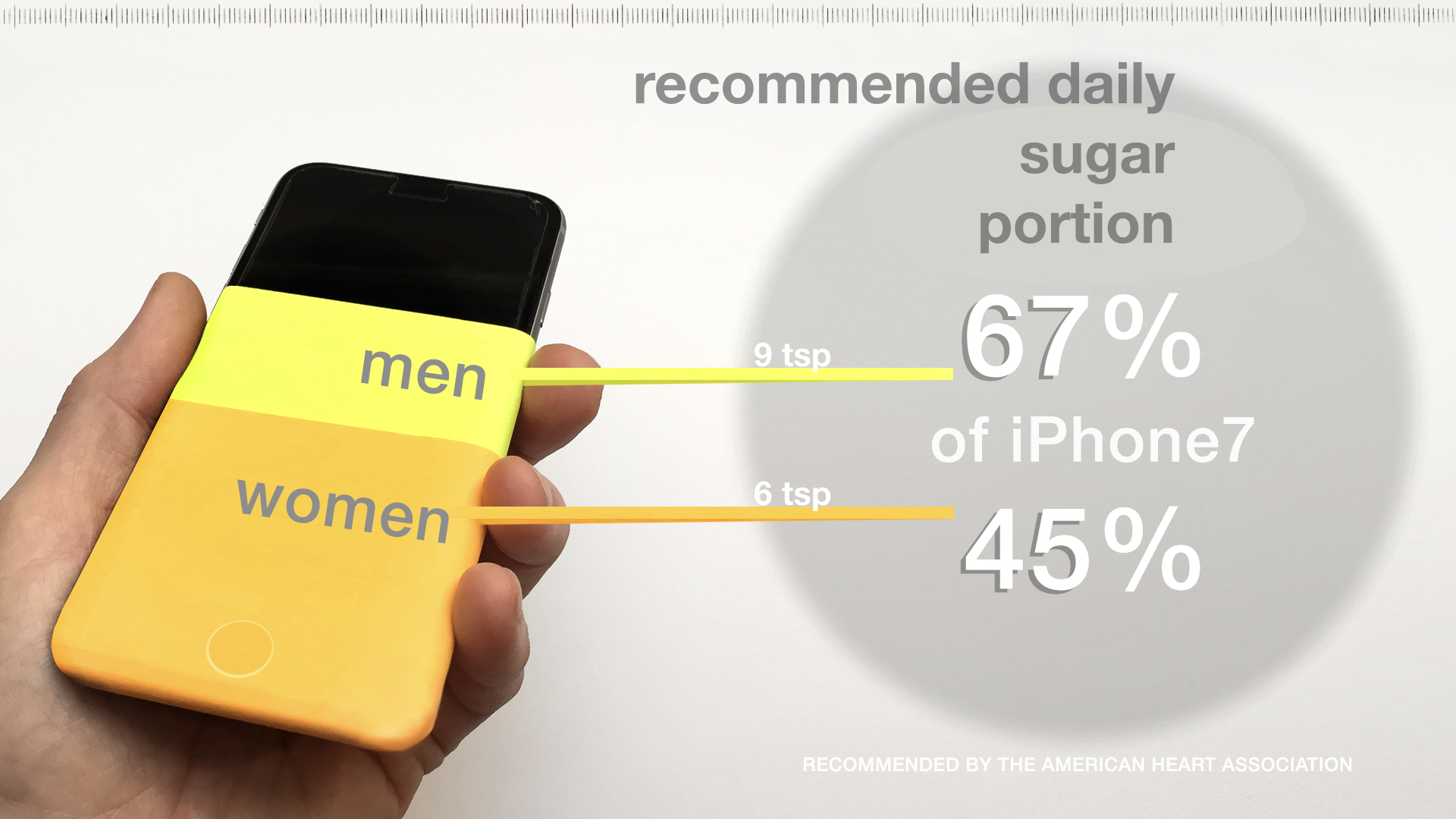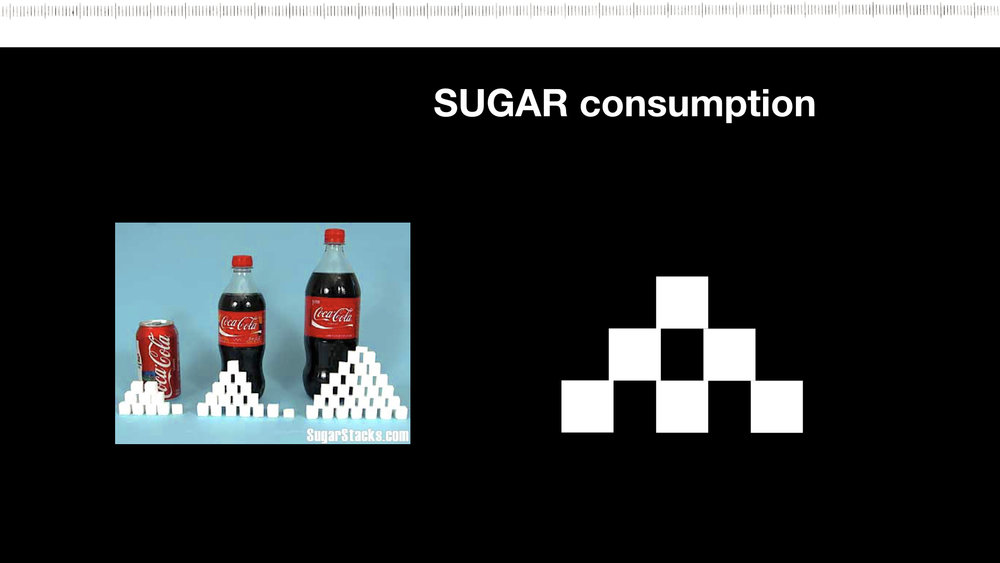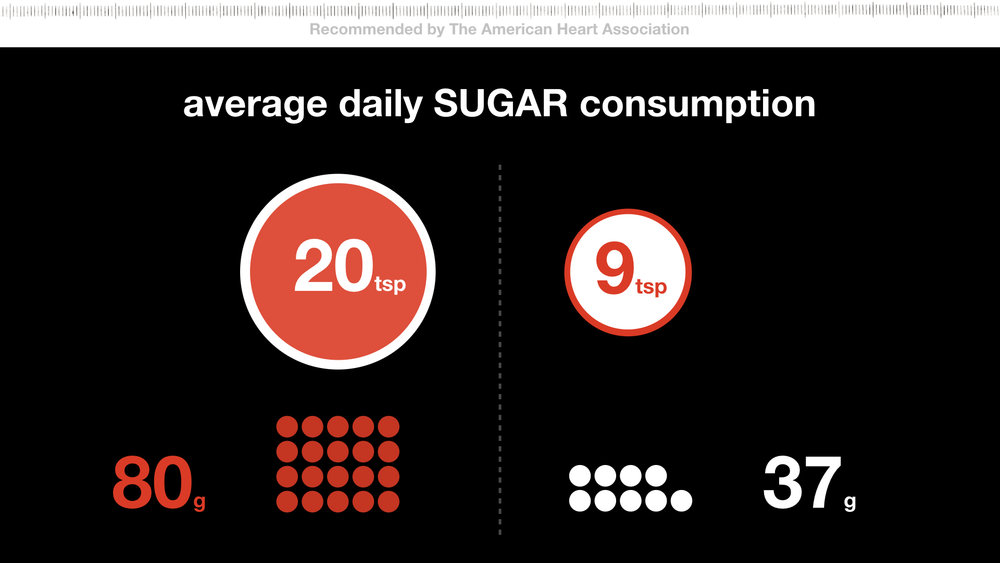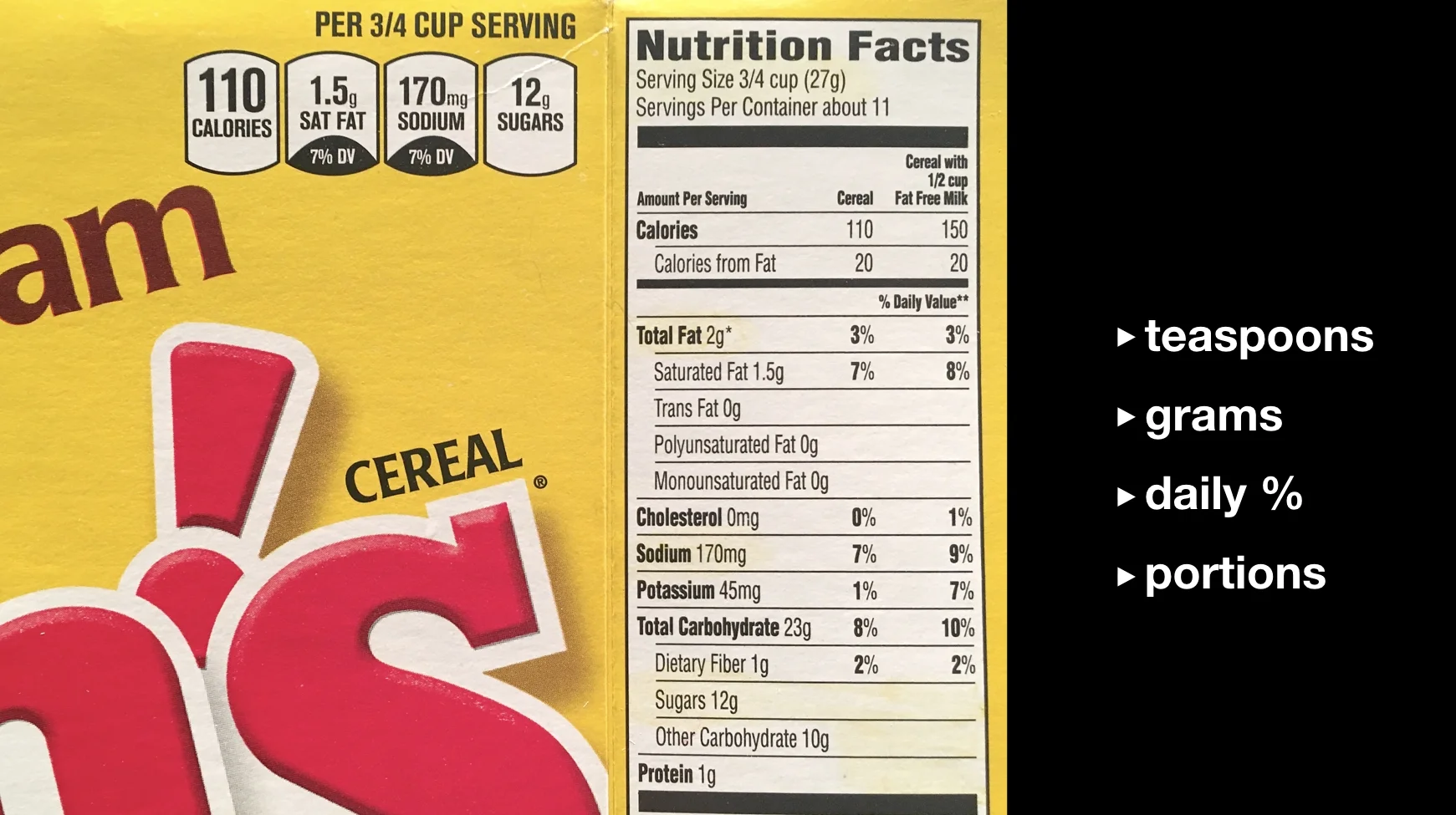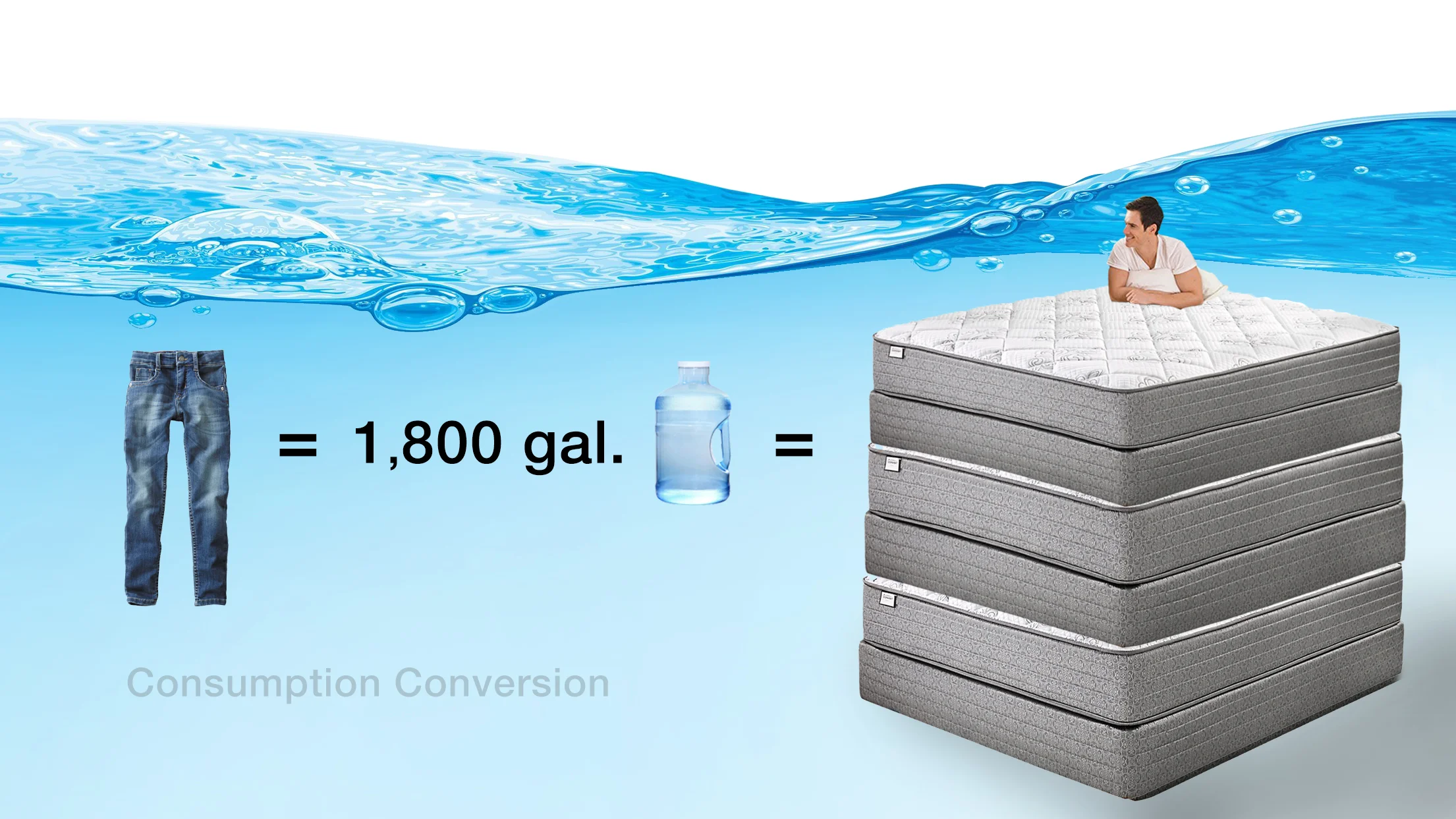CONSUMPTION CONVERSION
Is the a better way to understand how much sugar we should consume each day? Are grams and tablespoons valuable as a measurement or misleading?
The alternative I explored was to translate the suggested daily sugar amount into a physical object in order to make the information more tangible.
≈ 44% OF THE GLOBAL POPULATION USE A SMARTPHONE- THAT'S 2.32 BILLION PEOPLE
The weight of sugar was converted to mass (square inches) and then translated into the volume of an iPhone 7 which is nearly identical in mass to the Galaxy S7 phone.
For example, a 2 liter bottle of Coca-Cola equals a stack of 4 phones made of sugar– nearly 6x the daily amount for males as recommended by the American Heart Association.
Before arriving at a smartphone, I calculated the daily sugar consumption recommended by the American Heart Association into golf balls, batteries, soda cans, pencils and even mattresses.
For the past 58 years, since the Food Additives Amendment was enacted, the sugar content only needed to be displayed in grams. Despite 17 or more other ingredients displayed as percent Daily Values (%DV), sugar and added-sugar had always been excluded. The percent Daily Value allows people to make informed food choices that healthy diet.
*UPDATE: a major change has occurred since this project was written in 2017. In March 2020, the FDA has announced that the sugar information is now displayed as percent %DV on all Nutrition Fact lables for packaged foods.
WATER : denim jeans to mattresses
This conversion concept was also applied to illustrate the water consumption to produce the average pair of denim jeans.
The average pair of denim jeans requires 1,800 gallons of water to produce. By volume, that is the equivalent of 6 queen sized mattresses.
From cotton production to the dying and washing of fabric, the average pair of denim blue jeans requires 1,800 gallons of water to manufacture. By volume, that’s the equivalent of 6 queen sized mattresses of water.
Why the Queen? A study from Statista found that the queen mattress accounts for over 45% of the American market for people above 18 years old.


